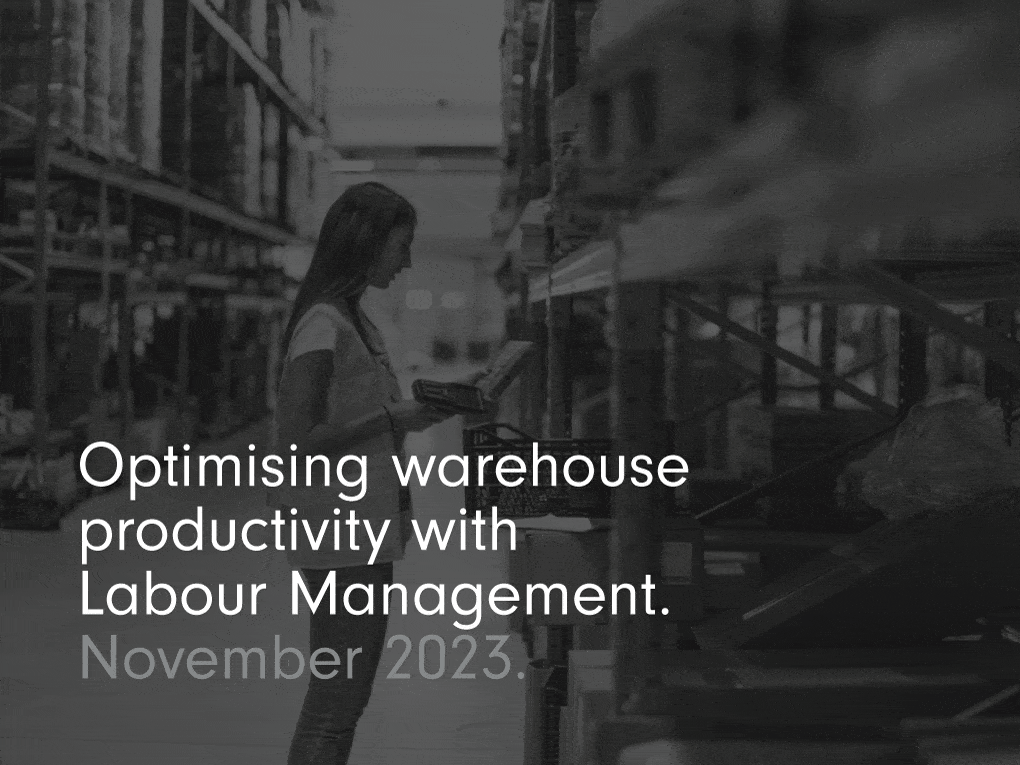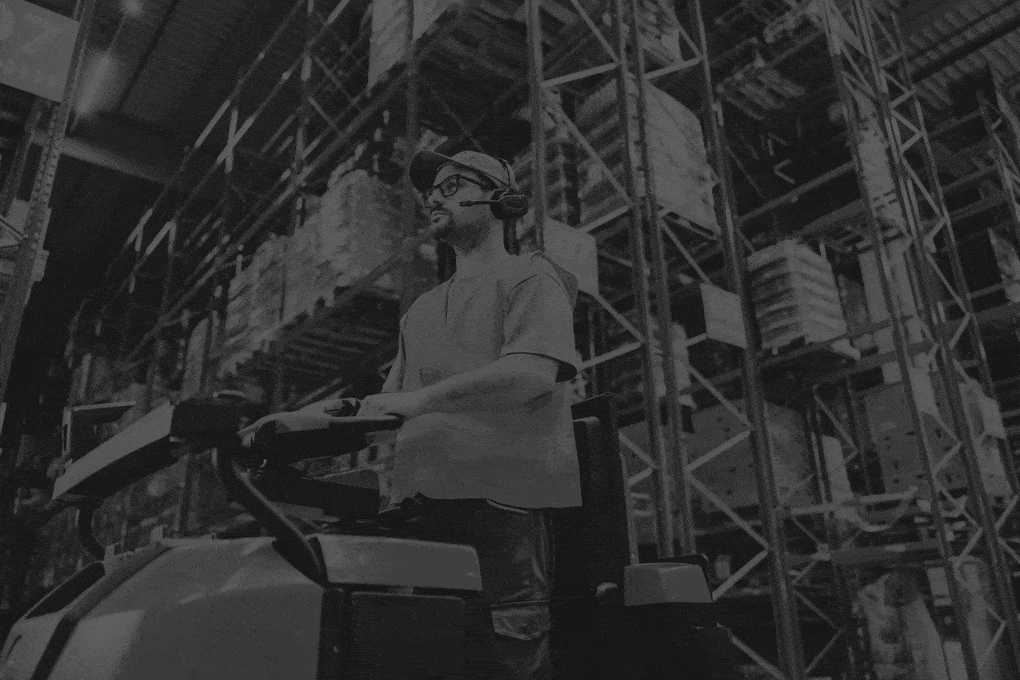Optimising warehouse productivity with Labour Management.

Companies in all industries are invested in enhancing their productivity. But the surge in ecommerce has made this a prime objective for warehouse managers.
Higher productivity not only enables you to meet rising customer demand, but it also boosts operational efficiency, improves customer satisfaction and speeds up order processing. Together, all of this can give your company a competitive edge.
One guaranteed way to optimise warehouse worker productivity is by using the labour management functionality in a WMS.
Using the warehouse Labour Management module for Körber WMS can help streamline your workers’ activities, reduce your staffing costs and elevate your overall efficiency.
Understanding Labour Management in Körber WMS.

Labour Management is an advanced WMS feature. This optional module for Körber WMS measures how long it takes your workers to perform various warehouse tasks and compares this with the time they are expected to take.
For example, it can demonstrate how long it takes your staff to make a pick or complete a replenishment using a forklift.
The expected length of time for each task is set out as a ‘labour standard’. By splitting tasks into their constituent parts, then applying the right variables, the system determines how long each task should take.
To achieve this, you configure the warehouse Labour Management module with a range of data. For example, the speed of a forklift, the size of the warehouse, the length of your aisles, the locations of goods, walking speeds, the time it takes to perform a scan or remove an item from a bin, and so on.
Companies can build in allowances that provide workers with personal time or which take account of fatigue levels or anticipated delaying factors.
The resulting labour standards can then be set as the target against which the actual times are measured. Data is automatically captured from the WMS and logged to provide the outcomes.
You can measure activity in real time and also track average achievements over a period of time. This data helps the warehouse management to review individual employee performance, highlighting those that consistently achieve their targets, as well as those that are struggling and may need extra training. By incorporating results into payment structures and leaderboards, warehouses can incentivise staff to enhance their performance.
As well as measuring how your workers are performing, the module can also be used to plan labour activities within the warehouse according to anticipated order volumes. Knowing how long certain tasks take allows you to scope out how many additional workers you will need to cope with seasonal peaks, for example.
Benefits of Labour Management.

Warehouse work is physically demanding and comparatively low paid. With the increasing demands of ecommerce, order volumes are surging. Combine these factors and it’s easy to see why warehouses struggle with low employee efficiency, productivity and engagement. The Körber WMS Labour Management module helps drive staff performance in all these areas.
Increased productivity.
Over the past ten years, labour productivity has been in decline globally. The trend was further exacerbated by the pandemic, driving warehouse managers to seek solutions to address the issues at the heart of the trajectory.
Labour Management can significantly enhance productivity. It provides a structured way of optimising worker performance, with real-time monitoring and meaningful data insights. By measuring and reporting on task timings, you can pinpoint issues with individual performance and examine overall trends. You can also assess team or shift performance, comparing them with others.
Improved efficiency.
With real-time monitoring, you can adjust your tasking throughout the day as needed. In this way, you can allocate staff to tasks that suit them best, or according to the needs of the warehouse.
This increases your efficiency and ensures your resource planning and staff allocation is effective and timely. This is particularly helpful when the warehouse is busy, such as during peak sales times.
Adjusting your labour to the demands of the warehouse also enhances customer satisfaction, ensuring you despatch customer orders quickly.
Higher levels of employee engagement and morale.
Setting benchmark targets not only clarifies your expectations for your employees, but it also serves to further incentivise them.
As they strive to achieve their targets, operatives are more engaged and the job can seem more fun. This raises motivation and morale.
Data can be used in performance appraisals to set personal goals, showing staff exactly how and where they can improve. Allowing your employees to monitor their own performance in real time, by displaying how they are doing against the labour standards on their scanning devices, empowers them further. They will take greater ownership of their work and more responsibility for their own improvement.
Opportunities for gamification.
Using the warehouse Labour Management module gives you significant opportunities to build in gamification aspects into your processes.
With the data to underpin the mechanics, you can gamify any or all your warehouse activities. Staff can compete against themselves and each other. Or you might pitch whole shifts or teams against one another in fun, but competitive activities. This increases engagement further, providing a fun atmosphere while also stimulating productivity.
Gamifying the user experience encourages a lively and enjoyable work environment, within a setting where efficiency and diligence are both rewarded and celebrated. Through gamification, what are typically quite mundane operations are transformed into exciting challenges, making the work more fulfilling.
Which companies can benefit from using Labour Management?

Labour Management is an advanced practice that is beneficial for larger companies that already have a solid operational foundation in the warehouse. It suits well-organised and managed warehouses that have established processes and systems in place. The operations may be complex and involve large numbers of staff, but the company will have mapped out the warehouse, defined locations and have access to data about its materials handling equipment.
These are the kinds of operations where continuous improvement is important, because even small enhancements in productivity can bring significant gains in efficiency and cost savings. In these environments, integrating Labour Management provides actionable insights that enable managers to identify areas for improvement and optimise their resource allocation.
In well-structured warehouses like this, there is a culture of accountability and performance that can thrive using Labour Management. Here, staff are empowered to excel in their jobs in a competitive yet collaborative atmosphere, ultimately driving the business towards higher standards of productivity and operational excellence.
Labour Management is relevant for any industry where small gains in productivity can significantly impact profitability – for example, retailers of consumer goods and electronics, pharmaceuticals suppliers and food and drinks distributors.
Elevate your warehouse with Körber WMS Labour Management.

Staying ahead in warehousing means keeping your operations sharp and efficient. Labour Management can help you dig deeper into the detail of your workers’ performance to spot and address the issues.
With gamification, you can turn everyday picking and packing into fun challenges, sparking some friendly competition that keeps the energy high and improves staff motivation.
With a clear benchmark, your staff can see where they stand and what they are aiming for next. This provides a clear roadmap to better performance, steering your workforce where they are needed most, keeping your customers happy and getting your orders out quickly.
To boost your productivity and make your warehouse a more engaging place to work, implement the Körber WMS Labour Management module and transform your warehouse into an operation where efficiency and enjoyment go hand in hand.